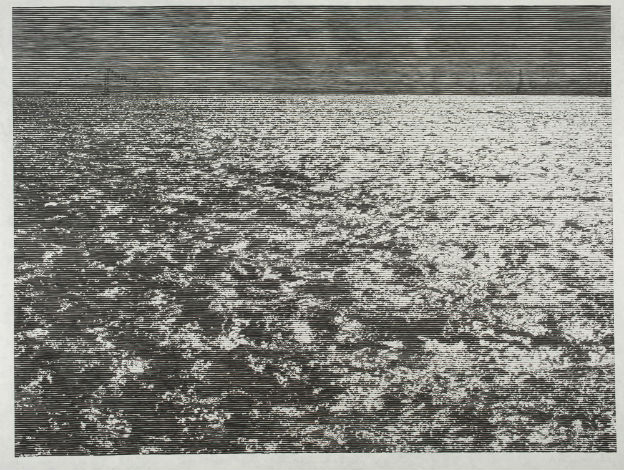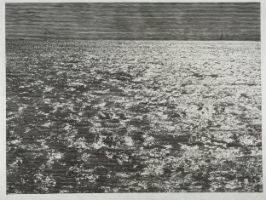
Davis Museum at Wellesley College. Museum purchase, The Dorothy Johnston Towne (Class of 1923) Fund .2017.12. Courtesy Christiane Baumgartner and Alan Cristea Gallery, London. Christiane Baumgartner © VG Bild-Kunst Bonn e.V. 2018 / ARS, New York
WELLESLEY, Mass. – The Davis Museum at Wellesley College presents “Christiane Baumgartner: Another Country,” the German artist’s first major solo museum exhibition in the United States. Organized as a survey of Baumgartner’s work at midcareer, the installation features 55 prints from the past decade. It includes several of the magnificent monumental woodcuts—hand-carved blocks and hand-printed impressions—for which the artist is best known, along with photo-engravings, aquatints and photogravures executed in series.
Sourced from videos and photographs, related to subjects that combine interests in war, destruction, speed, standstill and hope, Baumgartner’s prints are dramatic feats of concept and execution that have earned her critical attention around the world. The exhibition will runs from Sept. 21 through Dec. 16.
“Christiane Baumgartner works at the intersection of old and new media to expand the conceptual and technical capacities of printmaking—to push beyond the traditional boundaries of the medium’s expectations and precedents,” said Lisa Fischman, curator of the exhibition and director of the Davis Museum. “Baumgartner is processing mediated images—sourced from cinema and television or her own photographs and videos—to get at bigger and more tricky issues about speed and transmission, the limits of human sight, cultural memory and modes of representation. She’s an unusual character in the world of printmaking, of it and beyond it at the same time.”
Baumgartner is known for combining radically different mediums at extreme ends of the spectrum–plying the most contemporary technologies, whether in the form of digital video or photography, with the most traditional hand-labored techniques. After selecting an image that she wants to use, she modifies it on a computer using line grids and then transfers it onto a wooden support (often plywood), to carve the image by hand. Viewed up close, the cut lines look like a type of abstract language. Viewed from farther away, the lines resolve into clarity as image. Often monumental in scale, or produced in large series, Baumgartner’s prints exceed the small spaces commonly allotted to works on paper at most museums.
For example, one highlight of the exhibition, Another Country (2016), originated from a digital photograph taken by the artist in 2005 during her first visit to New York—a shot of New York Harbor, looking southwest down the Hudson River. Up close, the viewer sees what appear to be curved black and white lines. However, upon moving away, the waves of the water begin to form, and the sunlight reflecting on the water becomes clear.
Baumgartner’s representation of movement is especially evident in pieces such as The Wave (2017). Based on Hokusai’s iconic piece, it portrays a massive wave the instant before it crashes. In a similar manner, Phoenix (2018), depicts a large plume of smoke rising from a volcano before the ashes fall to the ground. The latter brings new vibrant color into work that was primarily black and white.
Baumgartner says of the exhibition, “For the earliest of the prints on view, I shot photos from a TV screen, taking stills from war documentaries, and these are an important starting point. From there, the exhibition brings us to the light and into the sunset. This creates a circularity: I see the connection in so far as the sunsets transmit a bitter-sweetness. They aren’t just nice. Rather, they are about transience. The circular concept lends the exhibition its mood.”


